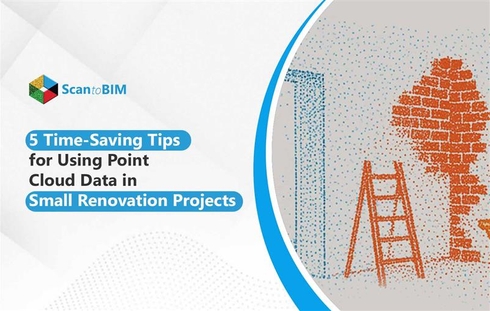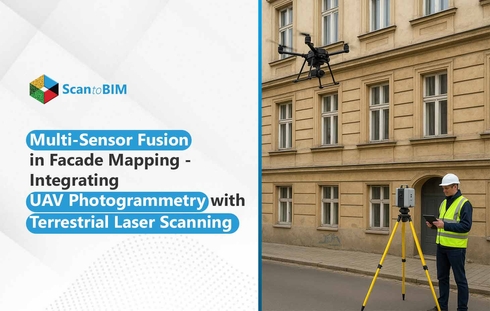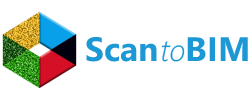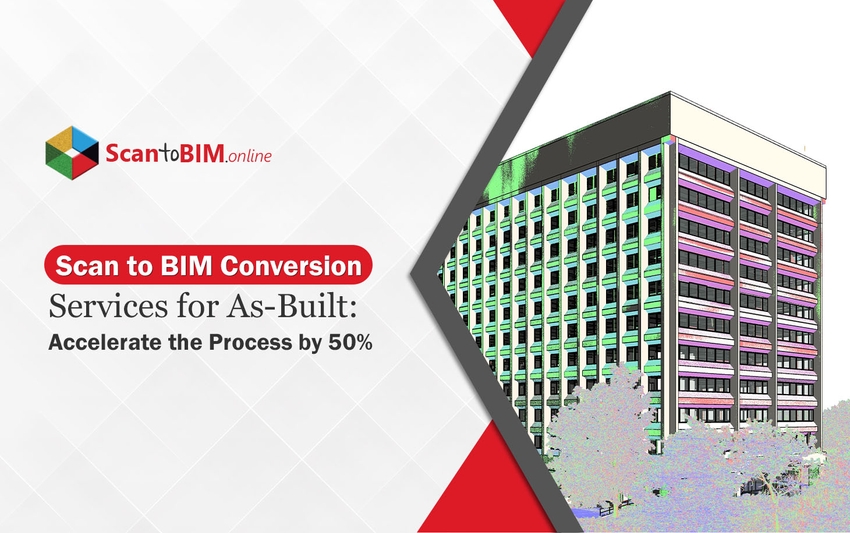
With the Proliferation of Building Information Modeling(BIM) in the Architecture, Engineering, and Construction(AEC) landscape, the need for accurate and nuanced as-built modeling services for existing buildings is rapidly increasing. 3D BIM models are digital representations of the facilities infused with all the relevant information about their life cycle.
The Cornerstone for Scan to BIM conversion is to analyze the relationships between materials, components, assemblies, and infrastructural systems in a project. Let’s delve further into how Scan to BIM conversion services benefit the AEC industry and how to achieve faster conversion for your next project.
Leveraging As-built Modeling in Surveying and Architectural Practices
As-built modeling serves as a critical tool for capturing, documenting, and analyzing the current state of buildings.
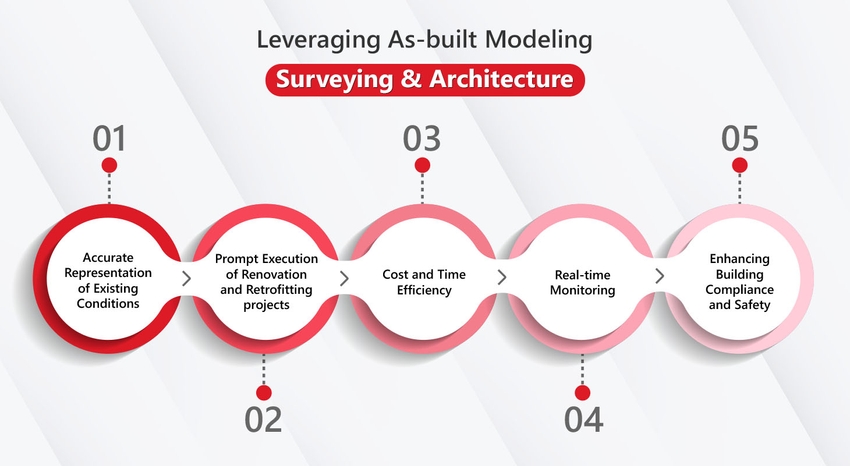
The significance of as-built modeling extends beyond documentation; the developed model provides a comprehensive digital representation of the structure that aids renovation and redevelopment tasks. Here’s an in-depth look at the benefits of adapting as-built modeling:
Accurate Representation of Existing Conditions
- As-built models offer a precise depiction of the existing conditions of a building and allow for a better understanding of how the structure has evolved, including any modifications or deviations from the original plans.
- Advanced architectural Scan to BIM services provide a detailed 3D representation of the visual and dimensional details of the existing structure, aiding the communication of complex information to the stakeholders.
- As-built 3D models account for historical reference for a building, elucidating a comprehensive record of its timeline and evolution. This information is crucial for future renovations, maintenance, and preservation purposes.
Prompt Execution of Renovation and Retrofitting projects
- Scan to BIM conversion allows for optimal space utilization with access to details about available spaces, structural limitations, and potential design opportunities to design functional and aesthetically sound spaces.
- Accurate as-built models influence the informed decision-making process for architects and engineers by providing essential details for renovation and retrofitting. The AEC professionals can conceptualize spaces in alignment with the existing conditions with the available details of the project.
Cost and Time Efficiency
- The 3D BIM models help foresee unexpected challenges during construction, reducing the likelihood of costly modifications and delays.
- Accurate as-built models contribute to better resource planning and allocation, material optimization, and streamlined project timelines, facilitating efficient project execution.
Real-time Monitoring
- The Internet of Things(IoT) along with Digital twin technology forms the foundation for as-built modeling to provide real-time monitoring of building infrastructure.
- This combination is a proactive approach to building maintenance and management and provides actionable insights into building operations.
- Performance optimization is an added benefit of integrating digital twin with Scan to BIM conversion services as it identifies potential opportunities and supports sustainable building practices.
Enhancing Building Compliance and Safety
- Precise documentation of structural components and details ensures adherence to local codes and standards, avoiding legal issues and ensuring occupant safety.
- The elaborative data about building layouts, safety systems, and exit maps is critical to developing effective evacuation plans and the safety of inhabitants during emergencies.
- Architectural Scan to BIM services supports risk assessment by analyzing potential hazards and vulnerabilities in a building, enabling construction professionals to incorporate preventive measures into the project.
How does AI contribute significantly to Scan to BIM services?
AI-powered scanning is a powerful approach to deal with challenges associated with scanning the project site. Let’s explore how AI contributes to the Scan to BIM conversion process.
Enhancing Data Capture Quality
Noise Reduction with AI
- AI algorithms automate the identification and filtration of noise from raw point cloud data, enhancing the data quality and accuracy of the scans.
- These models are designed to adapt to varying environmental conditions and provide consistent data quality. The AI-powered tools can automatically adjust the scanning parameters to resonate with the existing site conditions.
- The automated process eliminates the need for manual data cleanup and equipment adjustments.
Intelligent Scan Optimization
- Depending on the site location, AI can optimize potential routes and angles for scanning by eliminating obstructions.
- The AI-powered scanning also provides information about the most suitable time for scanning and legitimate weather conditions to achieve the finest data quality.
- While scanning with AI and machine learning, users get real-time feedback about potential issues such as blind spots or insufficient data density. This instant feedback can be used to avoid costly rescans and make on-the-fly adjustments right away.
Automatic Model Development
AI-powered Object Recognition
- AI can analyze and classify architectural elements and textures with extreme accuracy.
- The automated recognition efficiently uses Scan to BIM conversion services and results in faster model development without manual interference.
- The developed BIM models can be used for various applications due to their contextual understanding of various objects in a scan.
Synchronizing Data Processing
Efficient Point Cloud Processing
- AI divides point clouds into meaningful categories such as walls, ceilings, doors, and other architectural elements.
- The automation eliminates the manual work and accelerates the initial processing phase, allowing for quicker model development.
- The recognition and classification features increase the detail and usability of the BIM models.
Automated Data Management
- Compressing large data sets without significant loss of details is simplified with the use of AI algorithms.
- The easier and faster data storage enables efficient handling of massive point cloud files, improving accessibility and reducing storage costs.
- The automated alignment of multiple scans ensures seamless integration of different datasets, reducing the scope of human errors and accelerating the Point cloud to BIM conversion process.
Reduced Costs and Increased Accessibility
Affordable AI-powered scanning
- Integrating AI-powered scanning services into the projects eliminates human intervention, reducing manual labor costs and increasing efficiency.
- The efficient BIM modeling process reduces potential errors and discrepancies, eliminating the need for rework or expensive hardware investments.
Automated Quality Control
- AI algorithms automatically align the BIM models with standards and specifications, improving model accuracy and reducing the need for manual inspection.
- The proactive approach to alert the users about potential issues in advance eliminates the chances for rework and assures the quality of the project model.
Achieving faster Scan to BIM conversion speeds with AI integration requires leveraging the latest methodologies that facilitate efficiency, accuracy, and automation throughout. Each of these benefits is vital for a seamless project execution, but the speed at which they are executed can greatly influence the overall success of a project.
But, How is Speed a significant factor for the Scan to BIM conversion process?
Speed: Significance and Integrative Measures
Meeting Project Timelines:
One essential and most apparent benefit of faster Scan to BIM conversion is to meet project deadlines. With tight schedules and no scope for delays in the modeling process, speedy conversion minimizes the downtime between project phases and maintains the momentum of construction.
Enhanced Profitability:
Prolonged conversion times increase labor costs, extended use of scanning equipment and software, and time spent on conversion, eventually resulting in added project costs. Speedy Architectural Scan to BIM services allow companies to maximize revenue opportunities and increase profitability.
Better Decision Making:
Project decision-makers rely on 3D BIM models and their accurate detailing to make informed decisions and execute various project phases, from design to construction to facility management. Rapid Scan to BIM conversions allow for real-time insights about the as-built conditions, facilitating strategic project planning.
Seamless Collaboration and Communication:
Precisely developed as-built models serve as a common reference point for architects, engineers, contractors, and clientele, fostering teamwork and coordination. Rapid scan to BIM conversion reduces the chances of miscommunication or misunderstandings between stakeholders.
Advanced Integrative Measures for speedy Scan to BIM conversion
The AI-powered Scan to BIM conversion tool by ScantoBIM.online is a comprehensive approach to fast-track the conversion process and achieve quality-driven results. It converts any scan 50% faster than other tools with reduced human intervention and utmost accuracy.
The skilled and top-grade professionals develop 3D models with LOD 200, 300, and beyond details, to ensure explicit and precise representation of the structural elements.
Surveyors and MEP engineers can overcome various challenges in the project execution phase with the AI-powered modeling process. The avant-garde quality control system analyzes converted models on more than 100 different parameters to cite model accuracy.
A 50% faster Conversion Story
For a company - R.S. Knapp Co. Inc, 1.5 million sq ft Scan to BIM conversion was delivered in 2.5 years with the AI-powered conversion tool. Among the total of 80 projects executed for the company, each project was delivered with unparalleled accuracy and top-notch quality, providing a competitive edge to the company in the market.
The projects were not only converted with 50% more speed but facilitated 4 times cost savings, making it a cost and time-efficient approach for conversion.
Conclusion
Rapid Scan to BIM conversion with AI-powered modeling tools demands leveraging advanced technologies and methodologies to attain desired results. As AI continues to evolve, the likelihood of its adaptation in the architecture, engineering, and construction industry will witness a tremendous surge in the coming time.
The automated approach eliminates discrepancies, fast-tracks the conversion and the execution process, and transforms the perception around project completion.


